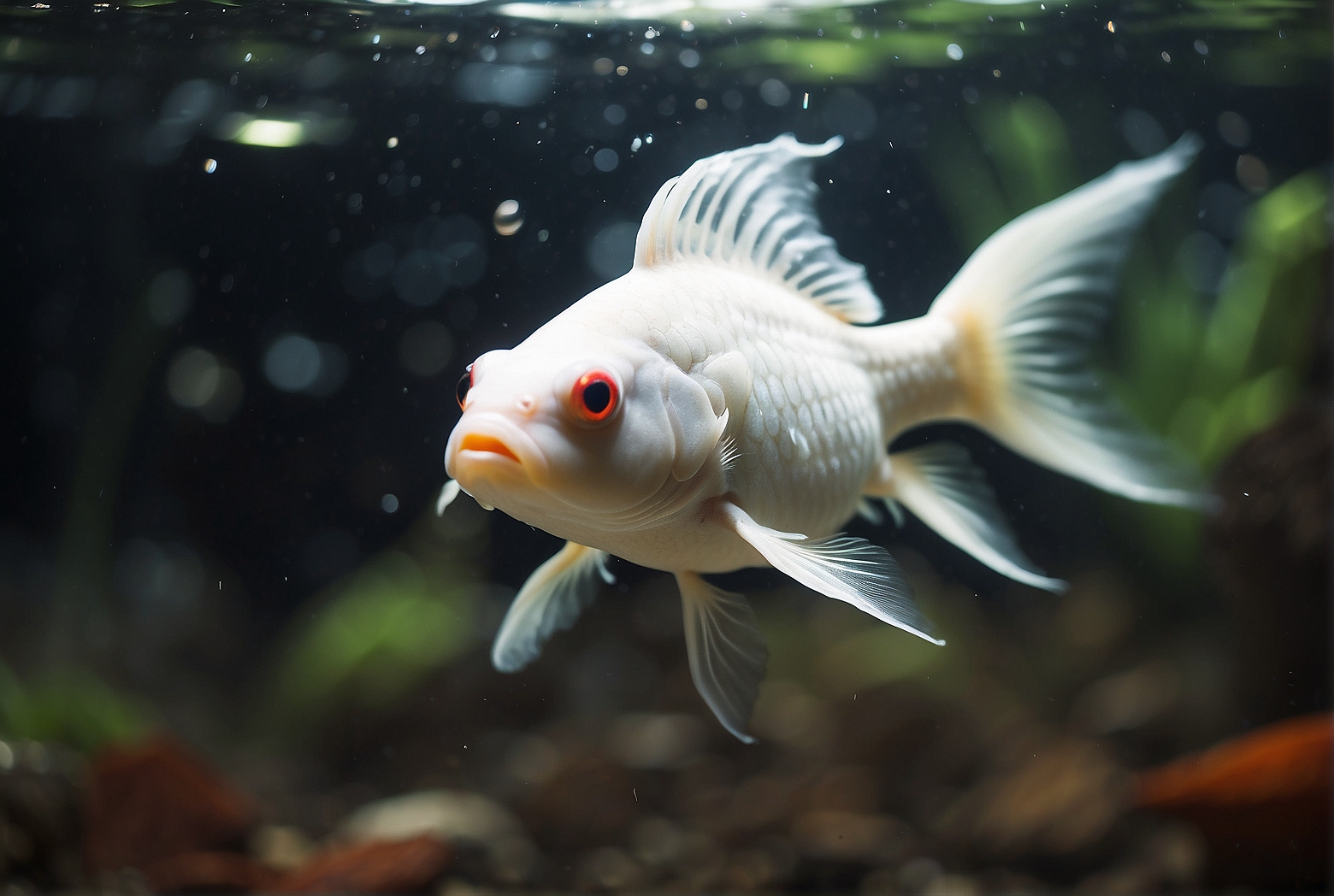Have you ever noticed your goldfish gradually changing color from vibrant orange to a pale white? It’s a mystery that many goldfish owners have pondered. In this article, we will explore the fascinating phenomenon of why goldfish turn white and uncover the possible reasons behind this puzzling transformation. So, get ready to dive into the captivating mystery of a white goldfish.
Reasons for Goldfish Turning White
Goldfish turning white can be attributed to various factors, including genetic factors, aging process, lack of melanin production, stress, disease or infection, and poor water conditions. Understanding these reasons can help you identify the cause and take appropriate measures to prevent further discoloration.
Genetic Factors
Genetic factors play a significant role in the coloration of goldfish. Through selective breeding, certain traits have been emphasized, resulting in variations in color. Albino goldfish, for example, have a genetic mutation that causes a lack of pigmentation, making them appear white. Leucistic goldfish, on the other hand, have reduced pigmentation but still retain some coloration.
Aging Process
As goldfish age, it is natural for their colors to fade or change. This gradual color fading can make them appear paler or even white. The aging process affects the melanophore cells responsible for producing pigmentation, causing a loss of color intensity over time.
Lack of Melanin Production
Melanin, a pigment responsible for coloration in animals, plays a crucial role in the vibrant hues of goldfish. However, when the production of melanin is hindered, goldfish can turn white. The lack of melanin production can be attributed to various factors, including the malfunctioning of melanophore cells and the dominance of xanthophore and erythrophore cells. Amelanistic goldfish, which lack melanin entirely, can also appear white.
Stress
Stress can significantly impact the color of goldfish. Poor water quality, overcrowding, inadequate diet, incompatible tankmates, and sudden environmental changes can induce stress in goldfish, leading to color loss or whitening. Maintaining a stress-free environment is crucial to keeping your goldfish’s color vibrant and intact.
Disease or Infection
Goldfish may turn white due to various diseases or infections. Ichthyophthiriosis, commonly known as ich, is a parasitic infection that can cause goldfish to develop white spots. Fungal and bacterial infections can also lead to discoloration. Identifying and treating these conditions promptly is essential to maintain your goldfish’s health and color.
Poor Water Conditions
Poor water conditions can have detrimental effects on goldfish, including turning them white. Ammonia and nitrite poisoning, high nitrate levels, pH imbalance, and low oxygen levels can stress goldfish and lead to color loss. Ensuring optimal water quality through regular maintenance and proper filtration systems is vital to preventing discoloration.
Preventing Goldfish from Turning White
To prevent goldfish from turning white, it is essential to provide them with proper care and attention. Here are some measures you can take:
-
Provide Proper Tank Size: Ensure your goldfish have enough space to swim and grow comfortably by providing an adequately sized tank.
-
Maintain Good Water Quality: Regularly test the water parameters and perform water changes as needed to maintain optimal water conditions.
-
Offer a Balanced Diet: Feed your goldfish a balanced diet that includes both high-quality commercial fish food and occasional supplementation with fresh vegetables and protein sources.
-
Avoid Overcrowding: Overcrowding can lead to stress and poor water quality. Be mindful of the number of goldfish and other tankmates in your aquarium.
-
Keep Tankmates Compatible: Ensure that the fish you keep with your goldfish are compatible in terms of size, temperament, and water preferences to minimize stress and potential aggression.
-
Monitor and Maintain Temperature: Goldfish thrive in temperatures between 65°F and 75°F (18°C to 24°C). Keep a close eye on the water temperature and use appropriate heating or cooling devices as needed.
-
Minimize Stressful Environment: Create a calm and stable environment for your goldfish by avoiding sudden changes in lighting, water conditions, or tank setup.
Treatment for White Goldfish
If your goldfish has already turned white, it is crucial to identify the cause and seek proper treatment. Here are some steps you can take:
-
Identify the Cause: Observe your goldfish’s behavior, check water parameters, and look for any signs of disease or infection to determine the underlying cause of color loss.
-
Consult a Veterinarian: If you’re unsure about the cause or if your goldfish’s health is deteriorating, consult a veterinarian with experience in fish care. They can provide a proper diagnosis and treatment plan.
-
Address Water Quality Issues: Conduct water tests and address any water quality problems, such as high ammonia or nitrite levels, pH imbalance, or low oxygen levels. Implement appropriate measures to improve water conditions.
-
Administer Medications: Depending on the diagnosis, your veterinarian may prescribe medications to treat the specific disease, infection, or parasite affecting your goldfish. Follow their instructions carefully.
-
Follow Treatment Instructions: Complete the full course of treatment as prescribed by your veterinarian. Monitor your goldfish’s progress and make any necessary adjustments to the treatment plan.
Conclusion
Goldfish can turn white due to a variety of factors, including genetic factors, aging process, lack of melanin production, stress, disease or infection, and poor water conditions. By providing proper care, maintaining good water quality, and seeking professional advice when needed, you can help prevent and address color loss in your goldfish. Remember, a healthy and vibrant goldfish is a happy goldfish!
